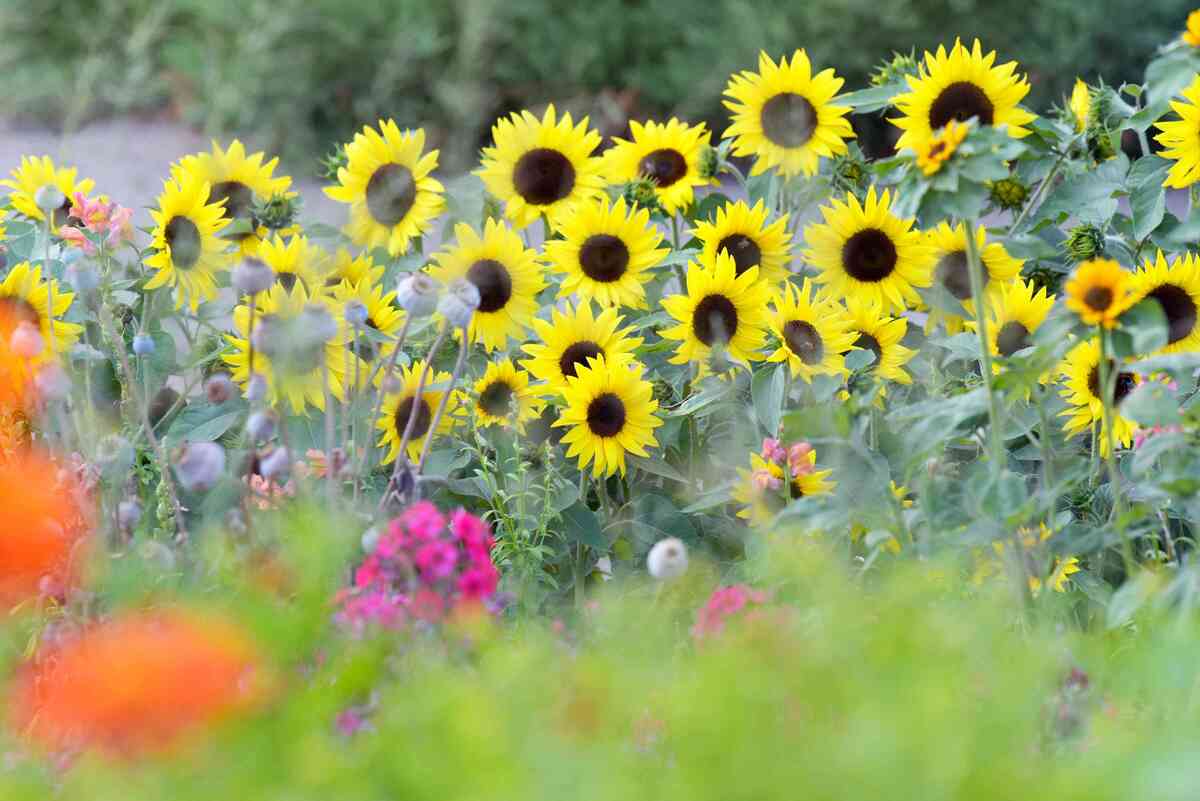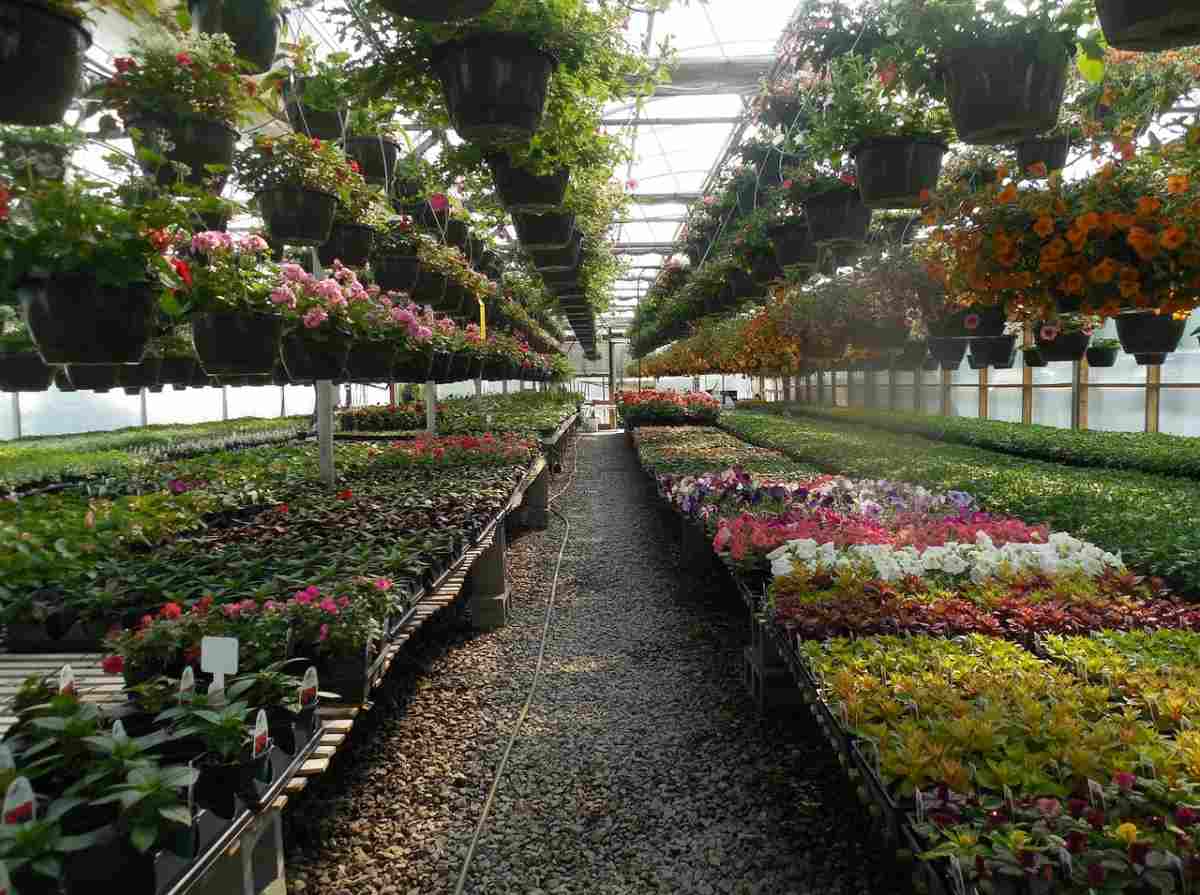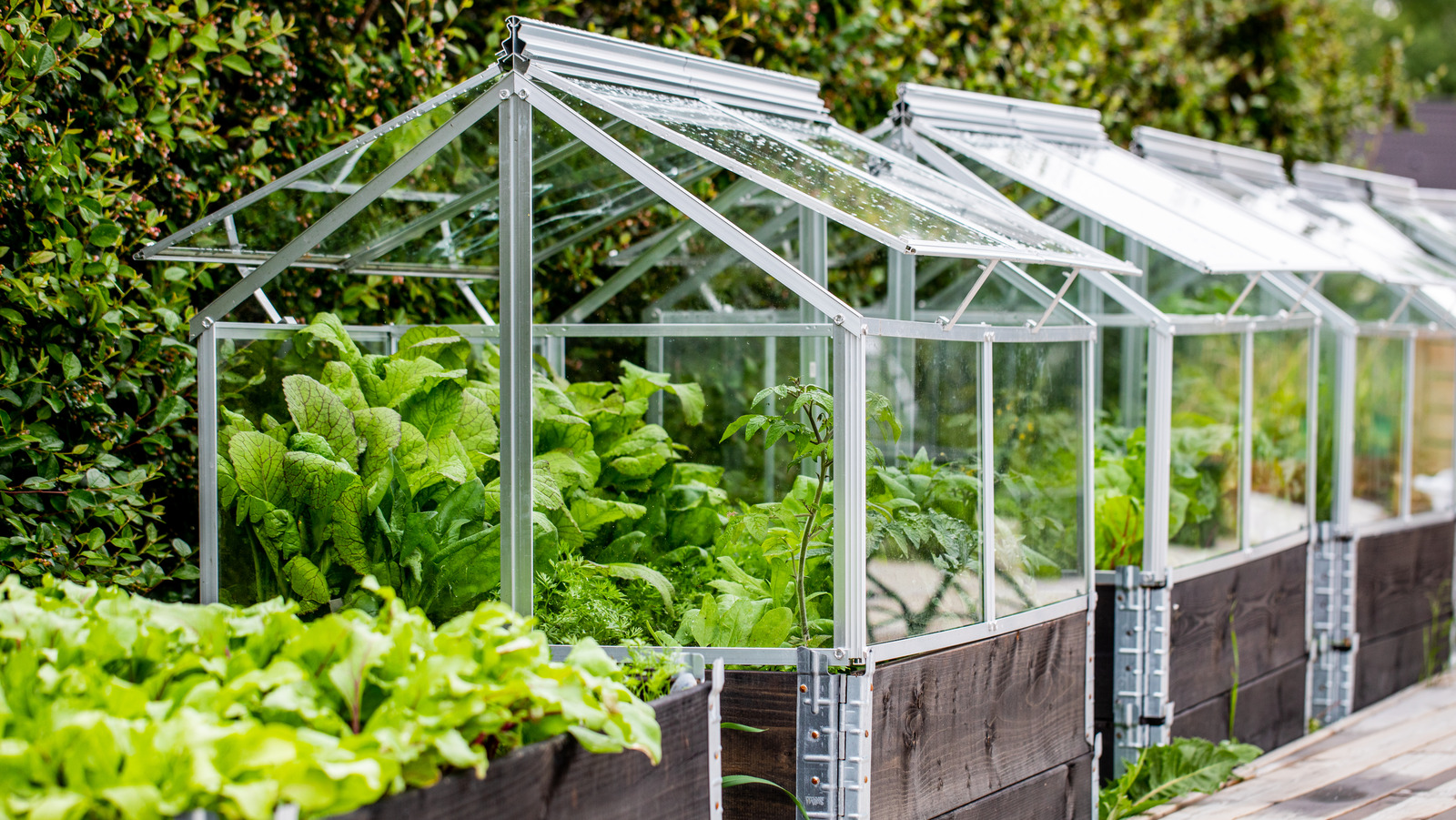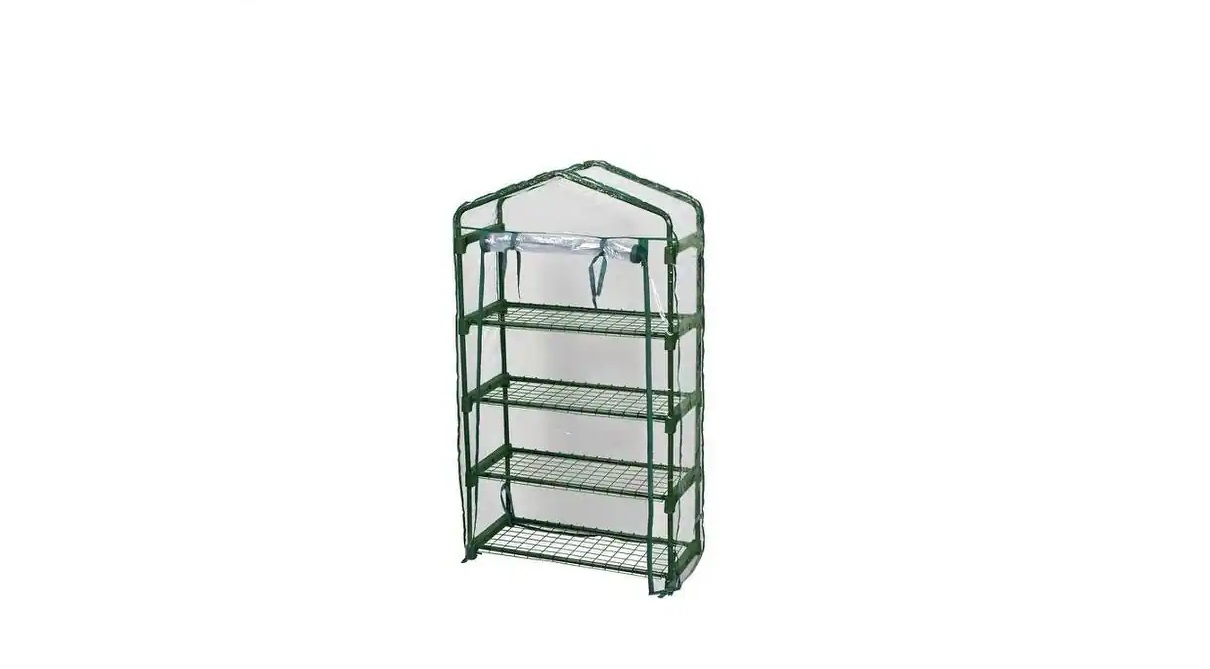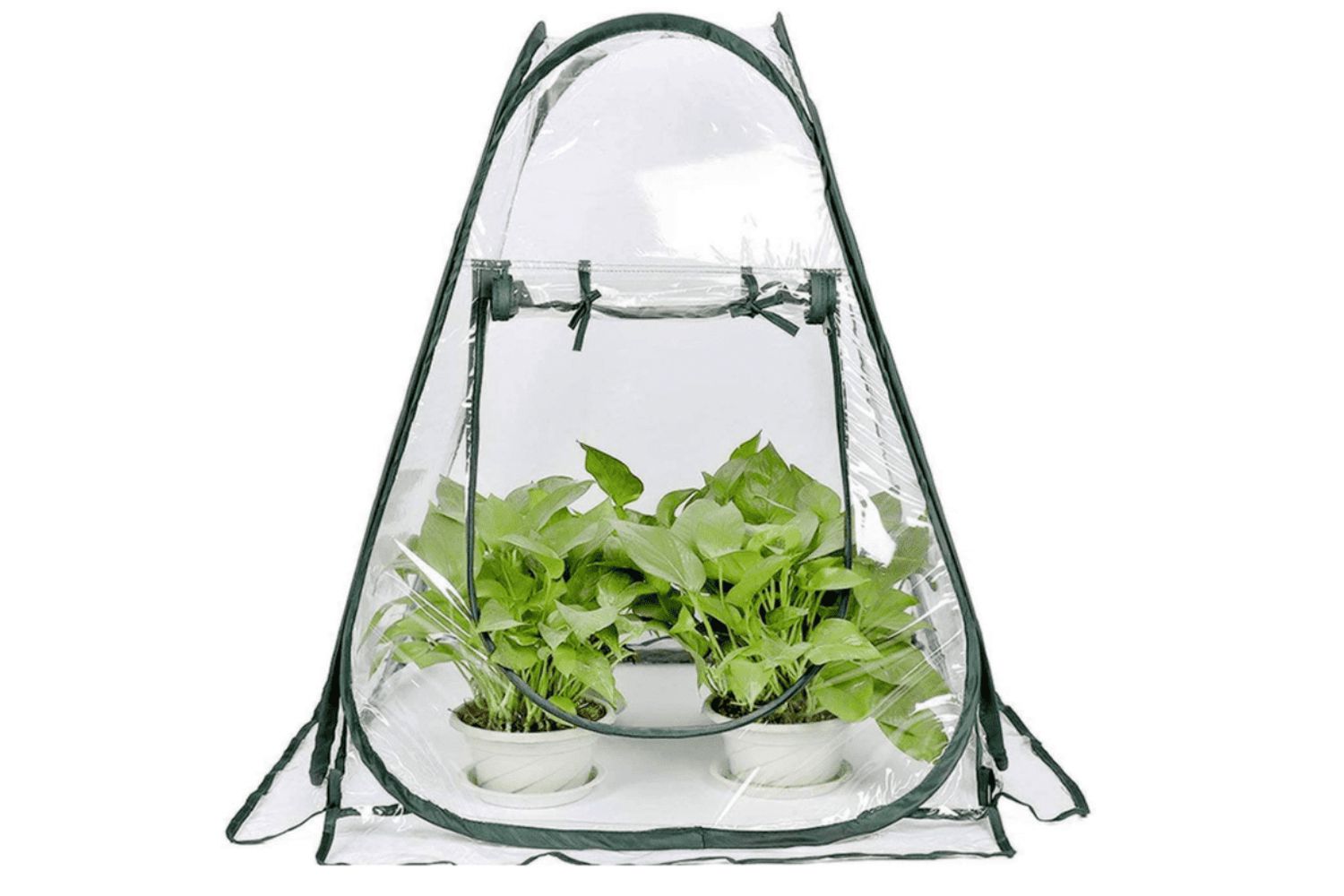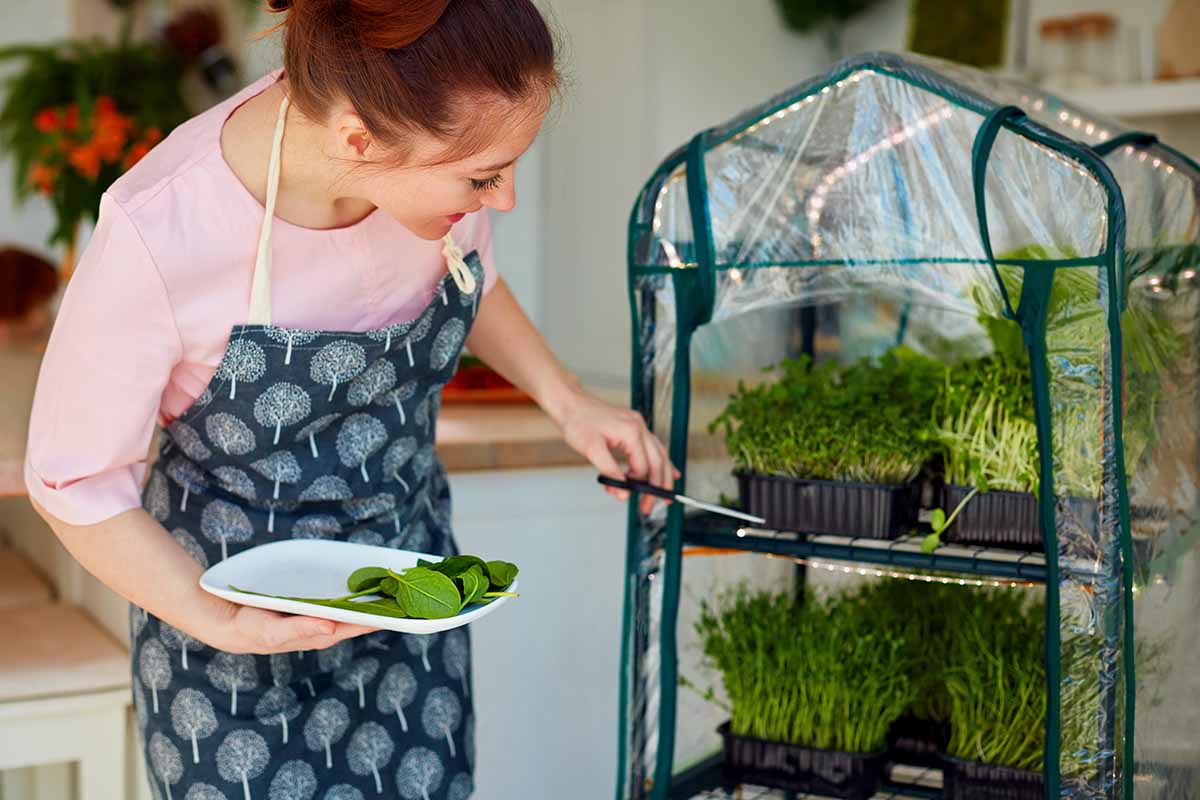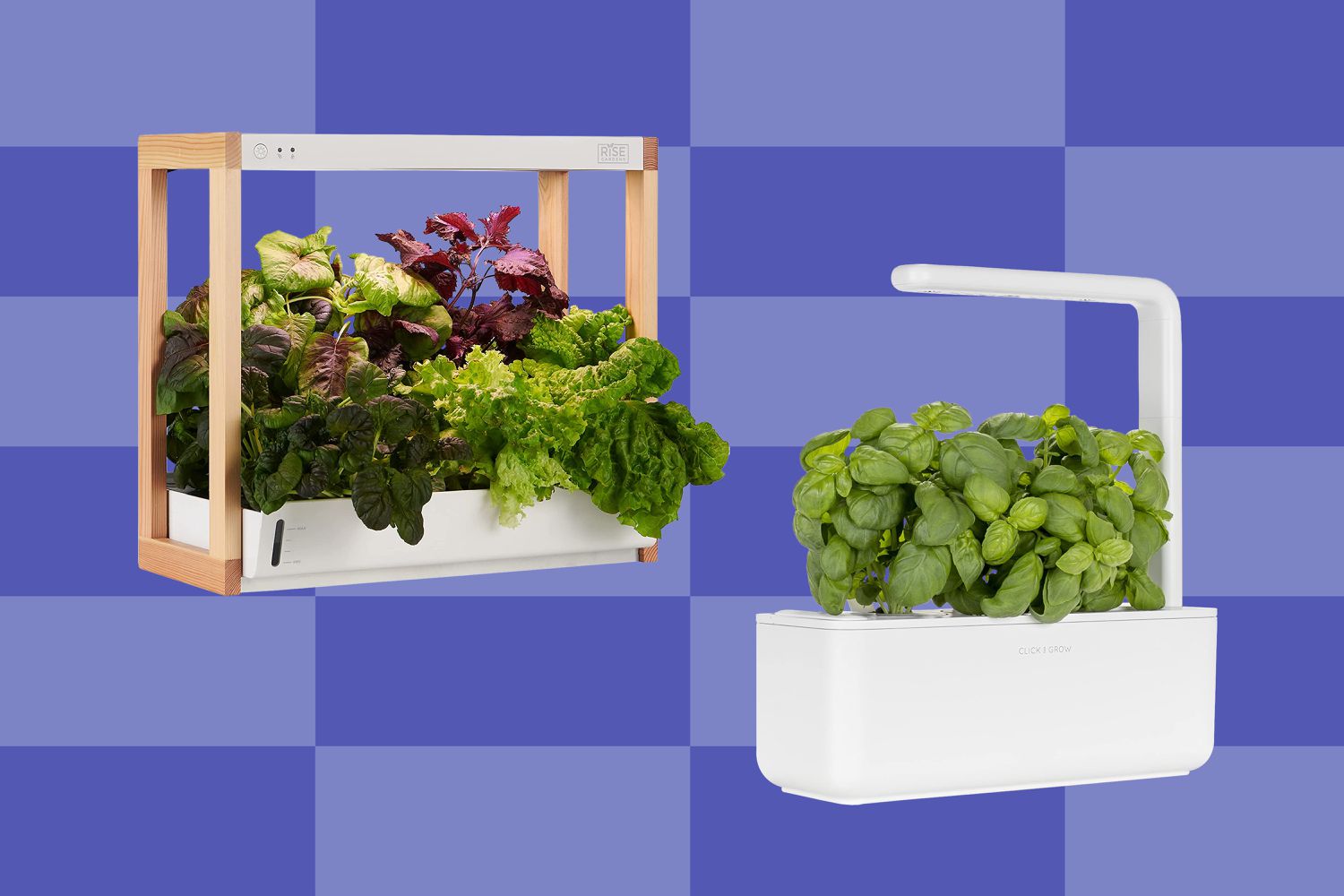Home>Gardening Techniques>What To Grow In Small Greenhouse
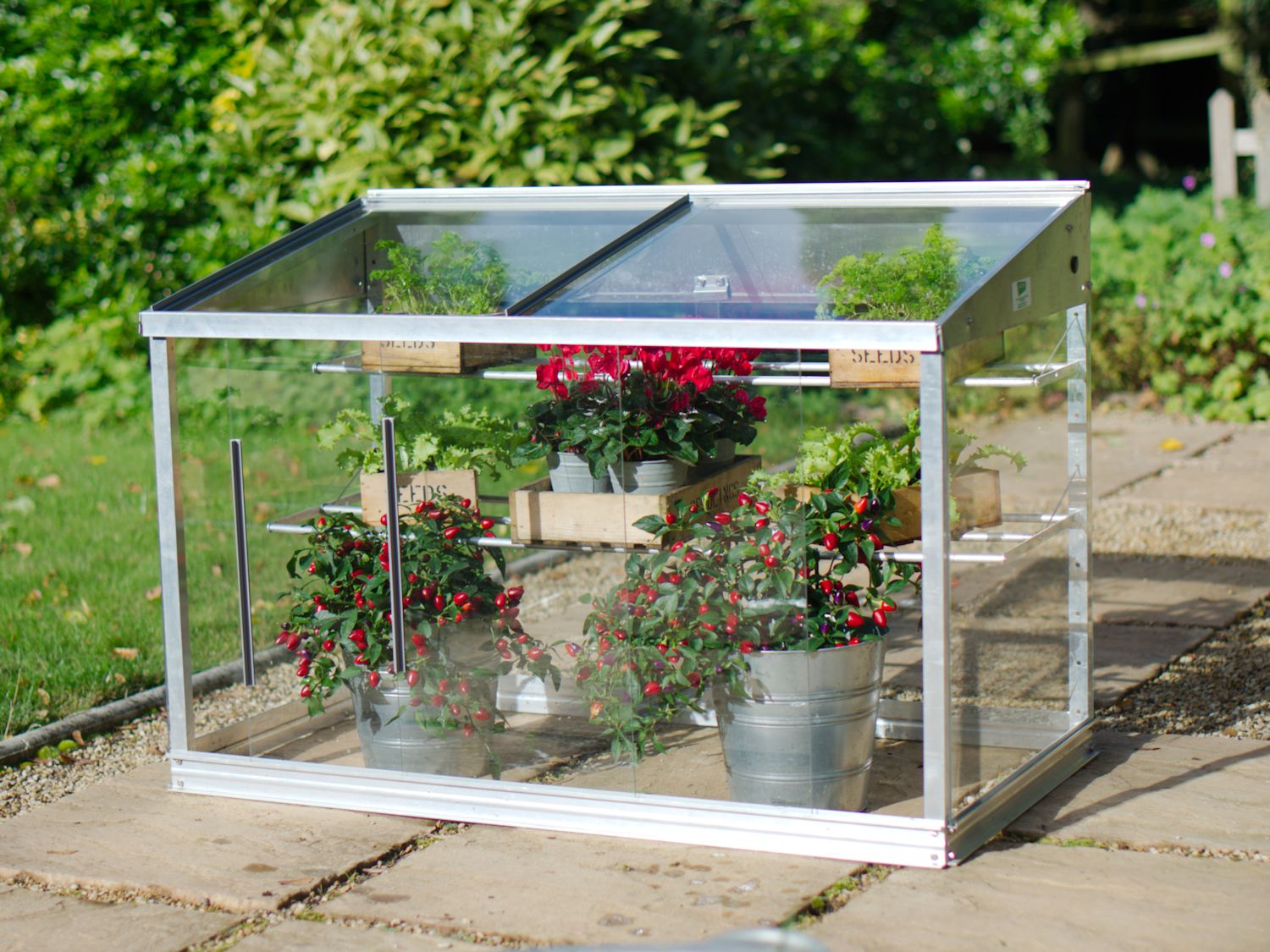

Gardening Techniques
What To Grow In Small Greenhouse
Modified: January 22, 2024
Looking to optimize your plant care in a small greenhouse? Discover the best plants to grow and nurture for a successful greenhouse experience.
(Many of the links in this article redirect to a specific reviewed product. Your purchase of these products through affiliate links helps to generate commission for Chicagolandgardening.com, at no extra cost. Learn more)
Table of Contents
Introduction
Welcome to the world of small greenhouse gardening! Whether you’re a seasoned gardener looking to expand your growing space or a beginner with limited outdoor area, a small greenhouse is the perfect solution. With a small greenhouse, you can create your own oasis of greenery and enjoy the benefits of gardening all year round.
A small greenhouse provides a controlled environment that protects your plants from harsh weather conditions, pests, and diseases. It also allows you to extend the growing season and experiment with a wide variety of plants that wouldn’t thrive in your local climate. But with so many options available, you might be wondering which plants are best suited for a small greenhouse.
In this article, we will walk you through the process of selecting the right plants for your small greenhouse. We will explore the different types of plants that thrive in these environments, including vegetables, herbs, flowers, and even fruit trees. Whether you’re looking to grow your own fresh produce, create a fragrant herb garden, or simply add a splash of color to your space, we’ve got you covered.
Not only will we discuss the best plants for a small greenhouse, but we will also delve into the essential care tips to ensure your plants thrive. From proper watering techniques to managing temperature and humidity, we’ll provide you with all the guidance you need to create a successful and flourishing greenhouse ecosystem.
Additionally, we’ll share some practical advice on maximizing space in a small greenhouse. Limited area doesn’t mean you have to compromise on the variety and quantity of plants you can grow. With clever organization and utilization of vertical space, you can make the most of every square inch of your greenhouse.
So, whether you’re a passionate gardener or a beginner with a green thumb, get ready to embark on an exciting journey into the world of small greenhouse gardening. Let’s dive in and discover the wonderful array of plants that can thrive in your small greenhouse!
Choosing the Right Plants
When it comes to selecting plants for your small greenhouse, it’s important to consider several factors, including the available space, climate conditions, and your personal gardening preferences. With careful planning, you can create a diverse and thriving garden that meets your specific needs.
First, assess the size of your greenhouse and determine how much space you have available for planting. This will help you decide whether to focus on smaller plants like herbs and flowers or if you have enough room for larger vegetables and fruit trees. Consider utilizing vertical space by incorporating hanging baskets or trellises to make the most of every inch.
Next, consider the climate conditions in your area. Different plants have varying temperature and humidity requirements, so it’s important to choose species that can thrive in the controlled environment of your greenhouse. Research the ideal temperature and humidity ranges for each plant you’re interested in and make sure they align with your greenhouse capabilities.
Take into account your personal gardening preferences and goals as well. Are you looking to grow your own fresh vegetables? Or are you more interested in cultivating a beautiful display of flowers? Perhaps you’re a fan of fresh herbs and want to have a convenient supply on hand. Identifying your gardening objectives will help you narrow down the options and select plants that align with your interests.
Consider the amount of time and effort you’re willing to invest in plant care. Some plants require more attention and regular maintenance than others. If you have limited time to dedicate to gardening, choose low-maintenance plants that are more forgiving and can withstand occasional neglect.
Another important factor to consider is the availability of sunlight in your greenhouse. Some plants thrive in full sun, while others thrive in partial shade. Assess the amount and intensity of sunlight your greenhouse receives throughout the day and choose plants accordingly.
Lastly, don’t forget to consider your personal preferences in terms of aesthetics and fragrance. Do you have a specific color scheme in mind or a particular scent you’re drawn to? Choosing plants that align with your preferences will enhance the overall ambiance of your small greenhouse.
By considering these factors and doing some research on the plants that suit your specific needs, you can choose the right plants for your small greenhouse. Remember, the goal is to create a harmonious and productive environment that brings joy and fulfillment to your gardening journey.
Vegetables for Small Greenhouses
One of the greatest advantages of a small greenhouse is the ability to grow your own fresh and healthy vegetables all year round. With a controlled environment, you can extend the growing season and have a bountiful harvest even in the colder months. Here are some vegetables that thrive in small greenhouse settings:
- Tomatoes: Tomatoes are a popular choice for greenhouse gardening due to their high heat requirements. Varieties like cherry tomatoes, beefsteak tomatoes, and Roma tomatoes can be grown successfully in a small greenhouse. Just make sure to provide support for the plants as they grow.
- Peppers: Peppers, including bell peppers, jalapenos, and chili peppers, are well-suited for greenhouse cultivation. They require warm temperatures and plenty of sunlight to produce sweet and flavorful fruits. Plant them in containers or grow bags to save space and make them easily movable if needed.
- Cucumbers: Cucumbers are a climbing plant that can thrive in a small greenhouse. They require trellises or stakes for support and benefit from warm temperatures and high humidity. Regular watering and regular pruning will encourage fruit production.
- Lettuce: Leafy greens like lettuce are easy to grow in a small greenhouse. They can tolerate cooler temperatures and thrive in partial shade. Plant different varieties to enjoy a variety of textures and flavors in your salads.
- Spinach: Spinach is a cold-hardy vegetable that can be grown in a small greenhouse year-round. It thrives in cool temperatures and partial shade. Harvest the leaves when they are young and tender for the best flavor.
- Radishes: Radishes are quick-growing root vegetables that are ideal for small greenhouses. They can be grown from seed and usually reach maturity within a few weeks. Plant them in succession to have a continuous supply throughout the seasons.
- Herbs: While not technically vegetables, herbs like basil, parsley, mint, and thyme are excellent additions to a small greenhouse. They require relatively less space and can be grown in pots or hanging baskets. Fresh herbs add flavor and aroma to your dishes and can be harvested as needed.
When growing vegetables in a small greenhouse, it’s essential to provide them with adequate nutrition and water. Use well-draining soil and fertilize regularly with organic compost or liquid plant food. Monitor the temperature and humidity levels to create an optimal growing environment for your vegetable plants.
By choosing the right vegetables and providing them with proper care, you can enjoy a fresh and abundant supply of homegrown produce throughout the year in your small greenhouse.
Herbs for Small Greenhouses
Herbs are a delightful addition to any small greenhouse. They not only add fragrance and beauty to your space but also provide fresh flavors to enhance your culinary creations. Growing herbs in a controlled environment allows you to have a continuous supply of aromatic leaves and stems. Here are some herbs that thrive in small greenhouse settings:
- Basil: Basil is a popular herb known for its aromatic leaves and versatility in various dishes. It loves warmth and sunlight, making it an ideal candidate for a small greenhouse. Plant different basil varieties, such as sweet basil, Thai basil, or lemon basil, for a variety of flavors.
- Parsley: Parsley is a biennial herb that can be grown as an annual in a small greenhouse. It enjoys cool temperatures and partial shade, making it a suitable option for a greenhouse environment. Harvest the vibrant leaves for use in soups, salads, and as a garnish.
- Mint: Mint is a hardy herb that can become invasive if planted directly in the ground. Growing it in a pot or container within a small greenhouse helps control its spreading nature. Mint thrives in bright indirect light and enjoys consistent moisture. Enjoy its refreshing flavor in teas, cocktails, or desserts.
- Thyme: Thyme is a versatile herb that adds a robust and savory flavor to dishes. It loves full sun and moderate temperatures, making it an excellent choice for a small greenhouse. Prune regularly to promote bushy growth and harvest the tender sprigs for various culinary uses.
- Rosemary: Rosemary is a woody herb known for its aromatic fragrance and needle-like leaves. It thrives in full sun and well-draining soil, making it suitable for a small greenhouse. Rosemary is a great addition to roasted vegetables, grilled meats, or infused oils.
- Oregano: Oregano is a perennial herb that enjoys warm temperatures and plenty of sunlight. Growing oregano in a small greenhouse allows you to have a fresh supply of flavorful leaves throughout the year. Harvest the leaves just before flowering for the best taste.
- Chives: Chives are a member of the onion family and are loved for their mild and onion-like flavor. They grow well in a small greenhouse, requiring ample sunlight and well-draining soil. Snip the slender leaves and use them as a garnish in salads, soups, or omelets.
When growing herbs in a small greenhouse, provide them with well-draining soil and water regularly, ensuring they don’t stay overly saturated. While most herbs prefer direct sunlight, some may thrive in partial shade. Monitor the temperature and humidity levels to create an optimal environment for your herb plants.
Herbs can be harvested at any time once they have grown sufficiently. Be sure to trim the plants regularly to encourage new growth and prevent them from becoming excessively leggy or woody. Enjoy the flavors and fragrances of freshly harvested herbs in your culinary creations.
A small greenhouse provides a perfect haven for growing a variety of herbs, allowing you to indulge in the aromatic delights they offer throughout the year.
Flowers for Small Greenhouses
Adding colorful and fragrant flowers to your small greenhouse can create a beautiful and inviting atmosphere. Flowers not only brighten up the space but also attract pollinators and add a touch of tranquility. Here are some flowers that thrive in small greenhouse settings:
- Petunias: Petunias are vibrant and versatile flowers that bloom in a variety of colors, including purple, pink, white, and red. They love full sun and require regular watering. Petunias are excellent for hanging baskets and containers in a small greenhouse.
- Geraniums: Geraniums are known for their colorful blooms and ability to withstand various growing conditions. They prefer bright sunlight but can tolerate partial shade as well. Geraniums come in a range of colors and can add a pop of color to any small greenhouse.
- Marigolds: Marigolds are beautiful and easy-to-grow flowers that bring brightness to any small greenhouse. They are known for their pest-repelling properties and can help keep pesky insects at bay. Marigolds prefer full sun and well-draining soil.
- Nasturtiums: Nasturtiums are edible flowers that add a splash of color and a peppery flavor to salads and other dishes. They prefer full sun or partial shade and are capable of sprawling or climbing with the support of trellises or stakes. Nasturtiums are an excellent choice for hanging baskets or containers.
- Lilies: Lilies are elegant and fragrant flowers that can make a stunning addition to a small greenhouse. They prefer bright indirect light and well-draining soil. Consider planting different varieties of lilies to enjoy their beauty and fragrance throughout the year.
- African Violets: African violets are delicate and charming flowers that thrive in the controlled environment of a small greenhouse. They prefer bright, indirect light and well-draining soil. African violets come in various colors, making them a lovely addition to any greenhouse.
- Snapdragons: Snapdragons are vibrant, upright flowers that come in a wide array of colors. They prefer cooler temperatures and can tolerate partial shade. Snapdragons are a great choice for adding vertical interest to your small greenhouse.
- Impatiens: Impatiens are low-maintenance and colorful flowers that thrive in shade or partially shaded areas. They come in various shades of pink, purple, white, and red. Impatiens are a great choice for adding a burst of color to the darker corners of your small greenhouse.
When growing flowers in a small greenhouse, provide them with well-draining soil and water regularly, ensuring they don’t become waterlogged. Monitor the temperature and humidity levels to create an optimal growing environment for your flowers.
Regularly deadhead spent flower heads to promote continuous blooming and remove any diseased or damaged foliage to keep the plants healthy. With proper care and attention, your small greenhouse can showcase a beautiful assortment of flowers throughout the year, creating a serene and captivating space.
Fruit Trees for Small Greenhouses
While it may seem challenging to grow fruit trees in a small greenhouse, with proper care and selection, you can enjoy delicious homegrown fruits all year round. Compact and dwarf varieties are perfect for small spaces and can be trained to fit within the constraints of a greenhouse. Here are some fruit trees that thrive in small greenhouse settings:
- Dwarf Citrus: Dwarf citrus trees, such as lemons, limes, and oranges, are well-suited for small greenhouses. They can be grown in containers, making them easy to manage and move if necessary. They require plenty of sunlight and regular watering to produce juicy and flavorful fruits. Prune them to maintain their compact size.
- Peaches: Certain peach tree varieties, like the “Bonanza” or “Pix Zee,” are ideal for small greenhouses. These dwarf varieties are self-pollinating and can bear delicious fruits in a confined space. Provide them with ample sunlight and pruning to control their size and shape.
- Plums: Compact plum tree varieties, such as “Mount Royal” or “Pixy,” can thrive in small greenhouses. They require well-draining soil and regular watering to produce juicy and flavorful plums. Prune them to maintain their size and shape and ensure proper air circulation.
- Fig Trees: Fig trees are well-suited for greenhouse cultivation, especially the dwarf varieties like “Petite Negra” or “Little Miss Figgy.” They prefer warm temperatures and consistent moisture. Prune them to keep their size manageable and to promote fruit production.
- Cherry Trees: Compact cherry tree varieties, such as “Stella” or “Compact Stella,” can be successfully grown in small greenhouses. They require well-draining soil, regular pruning, and proper pollination to produce the coveted sweet cherries. Consider planting multiple varieties for better cross-pollination.
- Blueberries: While not trees, blueberry bushes can be a fantastic addition to a small greenhouse. Compact blueberry varieties are available that can be grown in containers. They require acidic soil, ample sunlight, and moist but well-draining conditions to produce abundant and flavorful berries.
When growing fruit trees in a small greenhouse, provide them with well-draining soil, regular fertilization, and adequate sunlight. Pruning is crucial to maintain their size, shape, and overall health. Regularly monitor humidity levels to prevent issues like fungal diseases and pests.
Many fruit trees require cross-pollination for fruit set. If space permits, consider planting multiple varieties or utilize techniques like hand-pollination to ensure successful fruit production.
While small greenhouse fruit trees may not yield a large quantity of fruit compared to traditional orchards, the joy of picking and enjoying your own homegrown fruits is gratifying and satisfying.
Caring for Plants in a Small Greenhouse
Caring for plants in a small greenhouse requires attention to detail and consistency to ensure their growth and productivity. By providing the right conditions and following proper care practices, you can create an optimal environment for your plants to thrive. Here are some essential care tips for plants in a small greenhouse:
- Watering: Proper watering is crucial for the health of your plants. Water them thoroughly, allowing the soil to dry slightly between waterings. Avoid overwatering, as it can lead to root rot and other water-related issues. Consider using a drip irrigation system or self-watering containers to maintain consistent moisture levels.
- Ventilation: Good airflow is important in a small greenhouse to prevent the buildup of excess heat, humidity, and pests. Make sure to provide adequate ventilation by opening doors, windows, or using fans. This helps regulate temperature and prevents diseases caused by poor air circulation.
- Temperature Control: Monitoring and maintaining a suitable temperature range is crucial for the success of your greenhouse plants. Different plants have different temperature requirements, so it’s essential to research and provide the appropriate conditions. Consider using shade cloth or installing a thermostat-controlled heater or cooling system to ensure optimal temperatures year-round.
- Humidity: Some plants thrive in higher humidity levels, while others prefer lower humidity. Monitor and adjust the humidity within your greenhouse to meet the specific needs of your plants. Misting plants or using a humidifier can help increase humidity, while using dehumidifiers or proper ventilation can lower it if needed.
- Fertilization: Provide your plants with the necessary nutrients by regularly fertilizing them. Use a well-balanced, slow-release fertilizer or organic compost to promote healthy growth. Be careful not to over-fertilize, as it can lead to nutrient buildup and damage to the plants. Follow the recommended dosage and application instructions for each plant.
- Pest and Disease Management: Regularly inspect your plants for pests and diseases. Early detection is key to prevent the spread and damage caused by infestations. Implement organic pest control methods, such as hand-picking pests, using insecticidal soaps, or introducing beneficial insects. Good sanitation practices, like removing dead leaves and debris, can also help prevent the buildup of diseases.
- Pruning and Training: Proper pruning and training techniques help maintain the shape and size of your plants and promote healthy growth. Remove dead or damaged foliage regularly and pinch back excessive growth to encourage bushier plants. Use stakes, trellises, or other support structures as needed to guide the growth of climbing or vining plants.
It’s important to regularly monitor the overall health and growth of your plants. Look for any signs of stress, nutrient deficiencies, or overcrowding. Adjust care practices accordingly and make necessary adjustments to maintain a harmonious and productive small greenhouse environment.
Every plant has its own specific care requirements, so it’s important to research and understand the needs of each individual species. By providing the proper care and attention, you can ensure that your plants thrive and flourish in your small greenhouse.
Tips for Maximizing Space in a Small Greenhouse
While a small greenhouse may have limited space, there are several creative techniques you can employ to maximize the available area and make the most of every square inch. By utilizing clever organization and innovative ideas, you can increase the capacity and productivity of your small greenhouse. Here are some tips for maximizing space:
- Vertical Gardening: Make use of vertical space by growing plants upward. Use trellises, stakes, or wall-mounted planters to support climbing or vining plants. This not only saves floor space but also allows for better air circulation and light penetration.
- Hanging Baskets: Hang plants in baskets from the ceiling or exposed beams of your small greenhouse. This not only adds visual interest but also frees up valuable floor and shelf space. Hanging baskets are perfect for growing trailing plants or herbs.
- Shelving and Stacking: Install shelves or arrange benches to make use of vertical space for potted plants. Opt for multi-tiered shelving units or stack containers vertically to maximize the number of plants you can grow.
- Compact and Dwarf Varieties: When selecting plants, choose compact or dwarf varieties that naturally take up less space. These smaller plants will allow you to fit more variety into your greenhouse while still producing a bountiful harvest.
- Utilize Windows and Sills: Make use of the windows and sills in your small greenhouse. Install window shelves or extend the sill to create additional space for small pots or seedlings. Windows provide abundant natural light, making them ideal for plants that require direct sunlight.
- Seed Trays and Grow Lights: Use seed trays and grow lights to start seeds indoors. This allows you to cultivate young plants in a compact and controlled space. Once they have grown, you can transfer them to larger pots or the garden outside, freeing up space for new seedlings.
- Succession Planting: Implement succession planting to make efficient use of space and ensure a continuous harvest. Once one crop is harvested, immediately replant the same area with a new crop. This maximizes the productivity of your greenhouse while minimizing idle space.
- Organized Plant Staging: Organize your plants strategically by grouping them according to their light and temperature requirements. Keep taller plants towards the back and shorter ones towards the front for better visibility and access. This allows you to create microclimates within your greenhouse.
- Utilize the Greenhouse Walls: Attach hooks or mount additional shelving on the walls of your small greenhouse. This provides extra space for hanging pots, tools, or storage containers. Vertical gardening on the walls can also create a visually appealing and space-efficient display.
Remember to regularly assess and reorganize your small greenhouse to optimize space usage. As plants grow and seasons change, you may need to adjust the layout to accommodate their needs. Be innovative and adaptable in your approach to maximize the potential of your small greenhouse.
With these tips and tricks, you can transform your small greenhouse into a thriving and productive space that efficiently utilizes every nook and cranny.
Conclusion
Congratulations! You are now equipped with the knowledge and insights to make the most out of your small greenhouse. By carefully selecting the right plants, such as vegetables, herbs, flowers, and even fruit trees, you can create a flourishing and productive oasis of greenery. With proper care, including watering, ventilation, temperature control, and pest management, your plants will thrive in the controlled environment of your small greenhouse.
Remember to maximize your space by utilizing vertical gardening techniques, hanging baskets, shelving, and compact varieties. By making efficient use of every inch, you can grow a diverse range of plants while creating a visually appealing and organized greenhouse.
Whether you are a seasoned gardener or a beginner with a green thumb, the world of small greenhouse gardening offers endless possibilities. Enjoy the pleasure of growing your own fresh vegetables, aromatic herbs, vibrant flowers, and even flavorful fruits. The joy of tending to your plants, watching them grow, and harvesting their yields is a rewarding experience that brings nature’s beauty and bounty closer to home.
So, embark on this exciting gardening journey with confidence. Experiment, learn, and adapt as you go along. With dedication and passion, your small greenhouse will become a haven of plants and a source of joy and fulfillment. Happy gardening!
